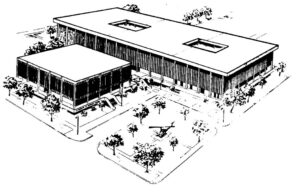CORRESPONDENCE COURSE OF
THE U.S. ARMY MEDICAL DEPARTMENT CENTER AND SCHOOL
SUBCOURSE MD0837 EDITION 200
INTRODUCTION

This subcourse was developed to prepare and sustain your mathematical skills as a Medical Laboratory Specialist. The emphasis is upon computations related to
solutions and their concentrations. If you feel that you need a more basic review of mathematics before taking this subcourse, you should request Subcourse MD0900, Basic Mathematics, which covers addition, subtraction, multiplication, and division of whole numbers; decimals, and fractions; and conversions to and from the metric
system. If you need a basic review of chemistry, you should request Subcourse MD0803, General Chemistry.
You must be able to solve the types of problems included in the lesson exercises and the examination if you are to perform well in the clinical laboratory.
Subcourse Components:
This subcourse consists of nine lessons and Appendices. The lessons and appendices are:
Lesson 1. General Mathematics Review.
Lesson 2. Introduction to Solution Mathematics.
Lesson 3. Molar Solutions.
Lesson 4. Equivalent Solutions.
Lesson 5. Conversion of Concentration Units.
Lesson 6. Dilutions.
Lesson 7. Titration.
Lesson 8. Concentrated Acids and Bases.
Lesson 9. pH and Buffers.
Appendix A. Review of Dimensional Analysis.
Appendix B. Table of Four-Place Logarithms.
Appendix C. Table of Common Elements and Radicals.
Appendix D. Metric Prefixes.
Here are some suggestions that may be helpful to you in completing this subcourse:
–Read and study each lesson carefully.
–Complete the subcourse lesson by lesson. After completing each lesson, work the exercises at the end of the lesson.
–After completing each set of lesson exercises, compare your answers with those on the solution sheet that follows the exercises. If you have answered an exercise incorrectly, check the reference cited after the answer on the solution sheet to determine why your response was not the correct one.
———————-
Download Here
Laboratory Mathematics
Length: 185 Pages
Estimated Hours to Complete: 7
Format: PDF file
Size: 505 KB
—————————-
Anyone may take this course. However, to receive credit hours, you must be officially enrolled and complete an examination furnished by the Nonresident Instruction Branch at Fort Sam Houston, Texas. Enrollment is normally limited to Department of Defense personnel. Others may apply for enrollment, but acceptance is not guaranteed.
—————————-
TABLE OF CONTENTS
INTRODUCTION
1 GENERAL MATHEMATICS REVIEW
Section I. Properties of Real Numbers
Section II. Properties of Equality
Section III. Rounding Off Numbers
Section IV. Scientific Notation
Section V. Significant Figures
Section VI. Logarithms
Section VII. Solutions to Exercises
2 INTRODUCTION TO SOLUTION MATHEMATICS
Section I. Grades of Laboratory Chemicals
Section II. Grades of Laboratory Water
Section III. Parts of a Solution
Section IV. Types of Solutions
Section V. Percent Concentration
Exercises
3 MOLAR SOLUTIONS
Section I. Mole Concept
Section II. Molarity and Molar Solutions
Section III. Millimoles per Liter
Section IV. Variations of Molarity Problems
Exercises
4 EQUIVALENT SOLUTIONS
Section I. Equivalent Weight
Section II. Normal Solutions
Section III. Milliequivalent per Liter (mEq/L) Solutions
Section IV. Variations of Normality Problems
Exercises
5 CONVERSION OF CONCENTRATION UNITS
Exercises
6 DILUTIONS
Exercises
7 TITRATION
Exercises
8 CONCENTRATED ACIDS AND BASES
Exercises
9 pH AND BUFFERS
Section I. Introduction
Section II. Dynamic Equilibrium
Section III. Dissociation of Water
Section IV. pH and pOH
Section V. Hydrolysis of Salts
Section VI. Buffers
Exercises
APPENDIX A. Review of Dimensional Analysis
APPENDIX B. Table of Four-Place Logarithms
APPENDIX C. Table of Common Elements and Radicals
APPENDIX D. Metric Prefixes
—————————-
Sample
LESSON ASSIGNMENT
LESSON 1 General Mathematics Review.
TEXT ASSIGNMENT Paragraphs 1-1 through 1-49.
LESSON OBJECTIVES After completing this lesson, you should be able to:
1-1. Identify and apply the properties of real numbers when performing computations.
1-2. Use properties of equality to solve equations for unknowns.
1-3. Round off numbers according to instructions in this lesson.
1-4. Express numbers in standard scientific notation and perform arithmetic calculations for same.
1-5. Determine the number of significant figures in a number and appropriately report these figures for computations.
1-6. Find the logarithm for a given number, find the antilogarithm for a given logarithm, and calculate using logarithms.
SUGGESTION After studying each section, complete the exercises
at the end of each section. These exercises help you to achieve the lesson objectives.
—————————-
Download Here
Laboratory Mathematics
